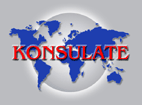|
Folgende Informationen stammen u.a. aus dem World Fact Book, daher sind die Inhalte zum Teil in englischer Sprache. Die Titelinformationen sind jedoch in Deutsch verfasst.
Zahlen und Fakten über Sued-Korea - Informationen - Links zum Thema. Auf Konsulate.de verfügbare Informationen in alphabetischer Reihenfolge:
Arbeitskraefte
23.77 million (31 December 2006 est.)
Arbeitslosigkeit
3.3% (December 2006 est.)
Bevoelkerung Wachstumsrate
0.394% (2007 est.)
Bevoelkerung unterhalb der Armutsgrenze
15% (2003 est.)
Bewaessertes Land
8,780 sq km (2003)
Bruttoinlandsprodukt Reale Wachstumsrate
4.8% (2006 est.)
Bruttoinlandsprodukt
$1.18 trillion (2006 est.)
Einwohner
49,044,790 (July 2007 est.)
Elektrizitaet - Export
0 kWh (2004)
Elektrizitaet - Import
0 kWh (2004)
Elektrizitaet - Produktion
345.2 billion kWh (2004)
Elektrizitaet - Verbrauch
321 billion kWh (2004)
Erdgas-Export
0 cu m (2004 est.)
Erdgas-Import
28.93 billion cu m (2004 est.)
Erdgas-Produktion
0 cu m (2004 est.)
Erdgas-Verbrauch
27.84 billion cu m (2004 est.)
Ethnische Gruppen
homogeneous (except for about 20,000 Chinese)
Export Gebrauchsgueter
semiconductors, wireless telecommunications equipment, motor vehicles, computers, steel, ships, petrochemicals
Export Partner
China 21.8%, US 14.6%, Japan 8.5%, Hong Kong 5.5% (2005)
Exportvolumen
$326 billion f.o.b. (2006 est.)
Gas-Reserven, nachgewiesen
Geburten auf 1000 Einwohnern
9.93 births/1,000 population (2007 est.)
Geburten pro Frau, Anzahl
1.28 children born/woman (2007 est.)
Geographische Koordinaten
37 00 N, 127 30 E
Hauptstadt
Seoul
Im Gebrauch befindliche Telefon-Hauptanschluesse
23.745 million (2005)
Import - Gebrauchsgueter
machinery, electronics and electronic equipment, oil, steel, transport equipment, organic chemicals, plastics
Import Partner
Japan 18.5%, China 14.8%, US 11.8%, Saudi Arabia 6.2% (2005)
Importvolumen
$309.3 billion f.o.b. (2006 est.)
Industrie Wachstumsrate
8% (2006 est.)
Industrien
electronics, telecommunications, automobile production, chemicals, shipbuilding, steel
Inflationsrate Verbraucherpreise
2.2% (2006 est.)
Internationale Organisationen (Teilnehmer)
AfDB, APEC, APT, ARF, AsDB, ASEAN (dialogue partner), Australia Group, BIS, CP, EAS, EBRD, FAO, IADB, IAEA, IBRD, ICAO, ICC, ICCt, ICRM, IDA, IEA, IFAD, IFC, IFRCS, IHO, ILO, IMF, IMO, Interpol, IOC, IOM, IPU, ISO, ITU, ITUC, LAIA, MIGA, NEA, NSG, OAS (observer), OECD, ONUB, OPCW, OSCE (partner), PCA, PIF (partner), SAARC (observer), UN, UNCTAD, UNESCO, UNHCR, UNIDO, UNMIL, UNMIS, UNMOGIP, UNOMIG, UNWTO, UPU, WCL, WCO, WHO, WIPO, WMO, WTO, ZC
Internet-Benutzer, Anzahl
33.9 million (2005)
Internet-Laendercode
.kr
Konsulate und Botschaften
Suedkoreanische Vertretungen in Deutschland, Deutsche Vertretungen in Süd-Korea - Informationen auf Konsulate.de
Kuestenlaenge
2,413 km
Landwirtschaft Produkte
"rice, root crops, barley, vegetables, fruit; cattle, pigs, chickens, milk, eggs; fish "
Mobiltelefone, Anzahl
38.342 million (2005)
Nationalfeiertag
Liberation Day, 15 August (1945)
Natuerliche Resourcen
coal, tungsten, graphite, molybdenum, lead, hydropower potential
Netto-Migrations-Rate (Migranten auf 1000 Einwohner)
0 migrant(s)/1,000 population (2007 est.)
Oel-Export pro Tag
645,200 bbl/day (2004)
Oel-Import pro Tag
2.263 million bbl/day (2004)
Oel-Produktion pro Tag
7,378 bbl/day (2004)
Oel-Reserven, nachgewiesen
Oel-Verbrauch pro Tag
2.149 million bbl/day (2004)
Pipelines Laenge in km
"gas 1,482 km; refined products 827 km (2006) "
Position
Eastern Asia, southern half of the Korean Peninsula bordering the Sea of Japan and the Yellow Sea
Religionen
Christian 26%, Buddhist 26%, Confucianist 1%, no affiliation 46%, other 1%
Sprachen
Korean, English widely taught in junior high and high school
Sterberate, Sterbefaelle auf 1000 Einwohner
5.99 deaths/1,000 population (2007 est.)
Stimmrecht (Ab Alter)
"19 years of age; universal "
Waehrung
South Korean won (KRW)
Wasserstrassen Laenge in km
1,608 km (most navigable only by small craft) (2006)
|

